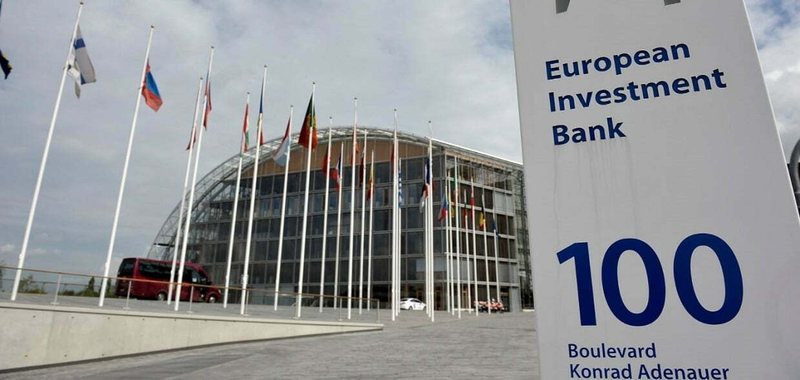Pensioner poverty in Europe: Which countries have the highest rates?

In most European countries, the average income of people over 65 is lower than that of the general population, according to the OECD. In some cases, the income of the elderly falls below 80% of the national average, contributing to high poverty rates among pensioners. So how do these levels of financial insecurity vary across Europe? In which countries do pensioners face the highest levels of poverty? And how do the incomes of the elderly compare to the national average?
Income poverty rates measure the percentage of people at the bottom end of the income distribution. Specifically, the poverty rate refers to the share of the population whose income falls below the poverty line. According to the OECD, this is defined as 50% of the median household income of the general population.
For example, in 2022, the median disposable household income in France, adjusted for household size, was €26,410. This means that the poverty line was €13,205. In 2022, the pensioner poverty rate in 30 European countries ranged from 3.1% in Iceland to 37.4% in Estonia, measuring the share of people over 65 with an income below half of the median disposable household income.
Eastern vs. Northern Europe
Pensioners tend to be most financially vulnerable in Eastern Europe, especially in the Baltic states and some post-communist countries. After Estonia, the highest rates of pensioner poverty were recorded in Latvia (33%), Croatia (28.5%) and Lithuania (24.6%). Pensioner poverty rates tend to be lowest in Western and Northern Europe. Iceland (3.1%), Norway (4.1%), Denmark (4.3%) and Finland (5.5%) have some of the lowest rates. These countries benefit from strong welfare systems and universal pension schemes.
However, Switzerland (19.8%) and the United Kingdom (14.9%) stand out with relatively high rates of pensioner poverty. Among the five largest economies in Europe, the United Kingdom has the highest rate, followed by Germany (14.1%) and Spain (13.1%). Italy performs slightly better at 12%, while France stands out with the lowest rate by far at just 6%. Overall, poverty rates among female pensioners are much higher than those among men, partly due to higher life expectancy.
The main factors behind poverty among pensioners
"Low pension payments are a major factor contributing to poverty among retirees," said Andrew Reilly, a pensions analyst at the OECD. "Even with relatively long working careers, pensions are low in Estonia, Japan, Korea, Latvia and Lithuania."
Reilly noted that these countries have some of the highest poverty rates among retirees. " In the Baltic states, high poverty rates are a result of low earnings-related pensions and relatively low safety net benefits ," he added. The strength of first-tier pensions, also known as state pensions, can reduce poverty rates among senior citizens by providing a guaranteed minimum income.
“Those countries that have large safety net benefits for retirees, whether targeted only to the poorest or paid universally to all, tend to have lower poverty rates among older age groups compared to the overall population, e.g. Denmark, Iceland and Norway,” Reilly said. He added that Latvia and Lithuania have low levels of safety net benefits.
Income of the elderly compared to the national average
Average incomes for people over 65, when considered as a percentage of the average income of the total population, vary significantly across Europe. In 2022, they ranged from 66.3% in Estonia to 107% in Luxembourg. This means that in Estonia, older adults received only two-thirds of the national average income.
Among the 29 countries, the income ratio for people over 65 falls below 80% in some cases. These include Lithuania (66.5%), Latvia (71.4%), Croatia (73.4%), Belgium (76.2%), Czech Republic (76.7%), Bulgaria (77.2%) and Switzerland (79.4%). At the top of the list, Luxembourg leads with 107%, followed by Italy (98.8%), Portugal (97.1%) and Spain (96.7%).
Among Europe's largest economies, Italy and Spain have the highest income ratios for the elderly, closely followed by France at 94.3%. The United Kingdom is at the bottom at 82.1%. Despite Germany's high rate of pensioner poverty, the income ratio for the elderly there still reaches 90%.
For example, in 2022, the average disposable household income in France adjusted for family size was €30,500. People over 65 received an average of €28,750. This ratio can fluctuate significantly from year to year in some countries. For example, in Turkey, it was 97.3% in 2019. It then increased to 103% in 2020 and fell to 84.5% by 2022.
Purchasing power
On the other hand, the OECD report “Pensions at a Glance 2023” notes that “ these figures are based on income data and significant country differences in the wealth (housing or otherwise) that older people own may not be reflected in income poverty rates .” In other words, both the amount of pension income and its purchasing power should be taken into account when assessing which countries offer the best conditions for retirement.

EIB supports Spain-France energy link - Invests €1.6 billion for underwater project between the countries
The European Investment Bank will support a planned energy interconnector between Spain and France with an investment of €1.6 billion. The decision comes......

Business inspections in areas with tourist influx - Focus on informality and working conditions
Officially in the tourist season, day by day tourist flows are concentrated in the most visited areas of Albania. Meanwhile, the Labor Inspectorate continues......

How has this week started for the major currencies? – Strong decline for foreign currencies!
The US dollar has recorded a significant drop in value since last week, starting this week negatively as well, having been bought this morning at 84.1 lek......

About 25% of vehicles remain in technical inspection - Official figures, over 3 thousand were deregistered in January-May
The General Directorate of Road Transport Services has published data for the period January-May 2025, regarding the technical inspection service of vehicles......

Retired, but on the move/ Working after retirement is more common among the self-employed
According to Eurostat data, in the European Union, around 56.4% of self-employed pensioners continued to work after receiving their old-age pension. This......

Global oil prices volatile - Escalation of Israel-Iran conflict shakes market and outlook
Oil prices were volatile on Monday, after rising 7% on Friday, as renewed attacks by Israel and Iran over the weekend raised concerns that the battle could......

Greek mussel industry in danger - High sea temperatures have destroyed production
Greece's mussel farming industry is under serious threat, after record-high sea temperatures last summer wiped out nearly 90 percent of production in the......

Israel and Iran continue attacks on each other - UN, emergency meeting. Calls for diplomatic solution
Israel and Iran continued to attack each other with missiles and aircraft overnight, into Saturday morning, with sirens heard across Israel, including Tel......





















